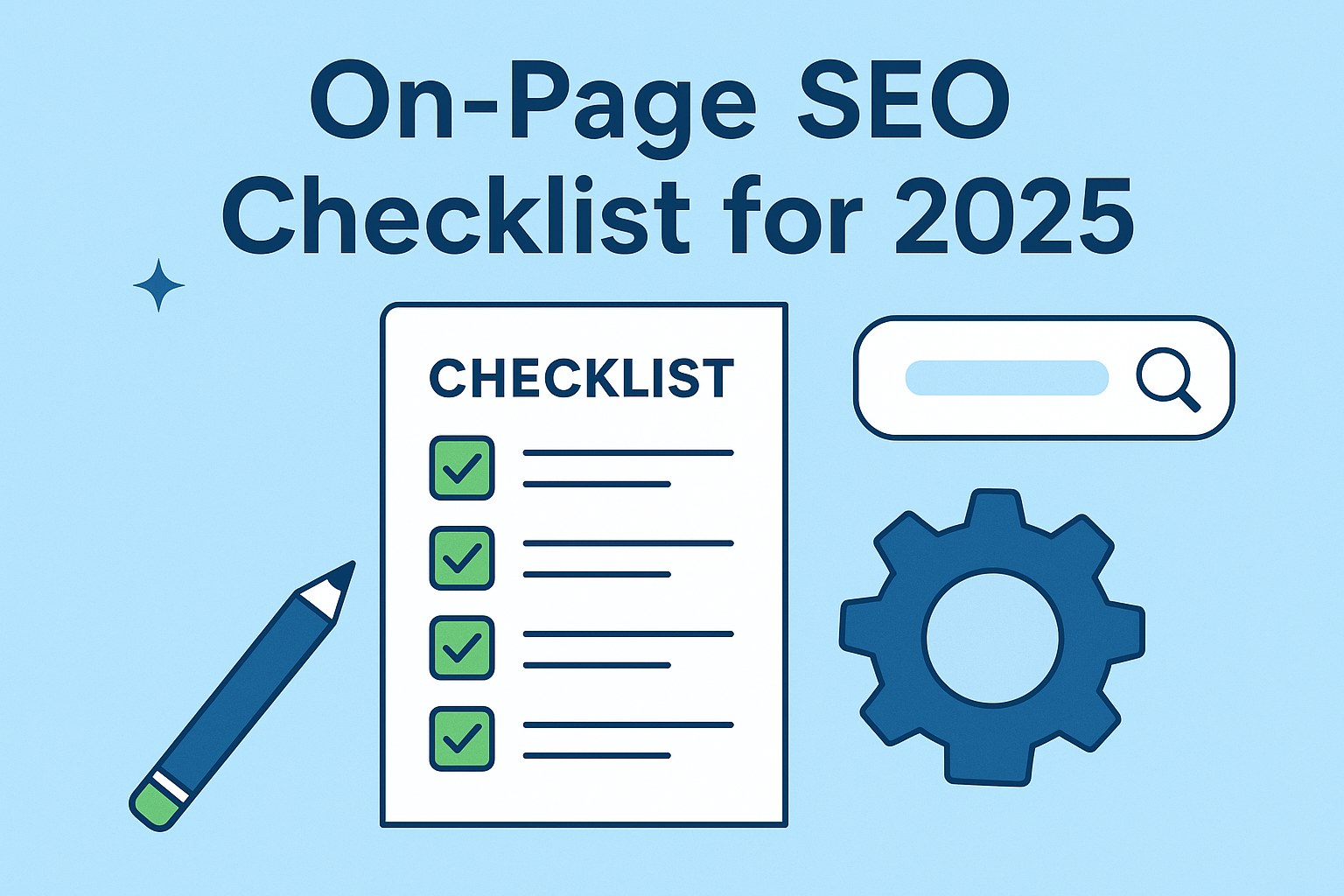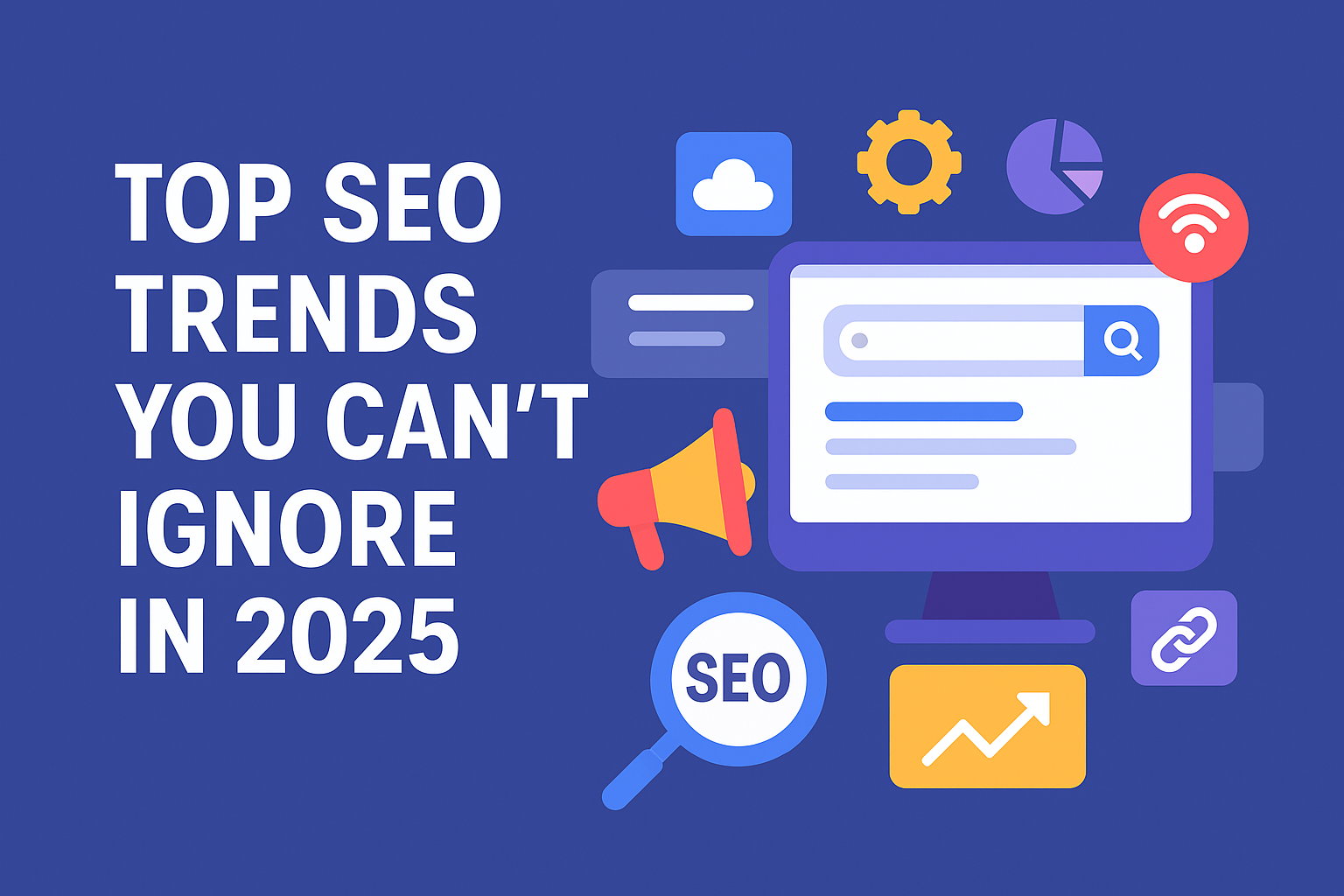Introduction
Search engine optimization (SEO) continues to evolve at an incredible pace, and on-page SEO remains one of its most critical foundations. In 2025, optimizing your web pages goes far beyond keywords and titles. Search engines like Google are smarter, AI-driven, and increasingly focused on user intent, page experience, and content authority.
That means businesses, bloggers, and digital marketers need to follow a checklist that reflects the modern landscape. Whether you’re new to SEO or already running campaigns, keeping up with trends ensures your website doesn’t get buried beneath competitors.
This guide walks you step by step through the ultimate on-page SEO checklist for 2025 — so you can optimize your pages effectively, rank higher, and build long-term visibility.
Keyword Research and Optimization
Focus on Search Intent, Not Just Volume
Gone are the days when ranking for high-volume keywords alone was enough. In 2025, Google emphasizes search intent — the “why” behind a query. Is the user looking to buy, compare, or learn? Matching your content to that intent increases engagement and ranking potential.
For example, if someone searches “best AI SEO tools,” they’re likely looking for a list of tools, not a technical whitepaper. Aligning your content structure with this intent helps you dominate search results.
Use AI-Powered Keyword Clustering
AI tools such as SEMrush Keyword Magic Tool, Ahrefs, or SurferSEO now group keywords into clusters automatically. Instead of targeting single terms, create content that ranks for entire keyword families.
For instance, “link insertion,” “contextual backlinks,” and “guest posting alternatives” may cluster together — allowing you to write one in-depth article that satisfies multiple queries.
check out our Link Insertion Services for smarter, contextual backlinks.
Optimize for Conversational and Voice Queries
With voice assistants like Alexa, Siri, and Google Assistant, optimizing for long-tail, natural-sounding queries is essential. Users ask:
- “What’s the best way to improve site speed in 2025?”
- “How do I optimize images for SEO?”
Include these conversational phrases in FAQs and subheadings.
Content Quality and Structure
Write with E-E-A-T (Experience, Expertise, Authoritativeness, Trustworthiness)
Google’s E-E-A-T framework is more important than ever in 2025. To build trust:
- Showcase author expertise.
- Use data, stats, and case studies.
- Link to credible sources like Moz or Search Engine Journal.
Quality content that demonstrates authority ranks higher and engages readers longer.
Use Content Clusters and Internal Linking
Instead of scattered blogs, organize content into topic clusters. For example:
- Main pillar: On-Page SEO Guide
- Cluster topics: “SEO for images,” “meta tags,” “Core Web Vitals”
Then link them together naturally, which signals authority to search engines.
(Need help scaling content clusters? Explore our Guest Posting Services to publish content on authoritative websites.)
Include Multimedia (Videos, Images, Infographics)
Content is no longer text-only. Adding optimized images, explainer videos, and infographics boosts time-on-page and makes content more shareable.
Title Tags and Meta Descriptions
Keep Titles Clear, Keyword-Rich, Under 60 Characters
Your title tag is still one of the strongest ranking signals. Include the primary keyword at the start, but keep it natural. Example:
✅ “On-Page SEO Checklist for 2025: 10 Steps to Higher Rankings”
Write Meta Descriptions That Drive Clicks (Under 160 Characters)
Meta descriptions don’t directly influence rankings but impact CTR (Click-Through Rate). Use action words, include your keyword, and promise value.
Example:
“Follow the ultimate on-page SEO checklist for 2025. Learn how to optimize content, speed, and UX to rank higher in search results.”
Headers and Readability
Optimize H1–H3 with Keywords Naturally
- Use H1 for your main title (one per page).
- Use H2 and H3 for subtopics, sprinkled with variations of your keywords.
Ensure Scannability with Short Paragraphs and Bullet Points
Modern SEO = user-friendly content. Keep sentences short (15–20 words), use bullet points, and highlight important terms.
Image and Video Optimization
Use Descriptive File Names and Alt Text
Search engines can’t “see” images. File names like seo-checklist-2025.png and descriptive alt text help them understand your visuals.
Compress Images and Enable Next-Gen Formats
Formats like WebP and AVIF reduce file sizes without losing quality, boosting page speed — a ranking factor.
Add Transcripts and Captions for Videos
Adding captions improves accessibility, and Google can index the additional text.
Technical On-Page Factors
Improve Core Web Vitals (Speed, Interactivity, Stability)
Google’s Core Web Vitals remain crucial:
- Largest Contentful Paint (LCP)
- First Input Delay (FID)
- Cumulative Layout Shift (CLS)
Use tools like PageSpeed Insights to fix slow-loading elements.
Use Mobile-First Design
Over 70% of searches now come from mobile devices. Responsive design isn’t optional — it’s a necessity.
Implement Schema Markup for Rich Snippets
Schema helps your pages show star ratings, FAQs, and product details in search results, increasing CTR.
Internal and External Linking
Build a Logical Internal Linking Structure
Connect related articles across your site. Example: From this guide, we can link to Best Deals on Link Insertion & Guest Posting for users interested in outreach strategies.
Link to High-Authority External Sources Naturally
Whenever you reference studies or best practices, link to trusted sites like HubSpot, Google Search Central, or Ahrefs.
Avoid Broken Links and Optimize Anchor Text
Check links regularly and use descriptive anchors (e.g., “guest posting service” instead of “click here”).
User Engagement Signals
Optimize for Dwell Time and Reduce Bounce Rate
Engagement signals matter. To keep users on your page:
- Use clear intros.
- Add visuals every 300 words.
- Create interactive content (polls, quizzes).
Add Clear CTAs to Guide User Actions
Encourage readers to subscribe, share, or explore your services. For instance:
👉 Looking for reliable outreach? Contact us through our Contact Page.
FAQs
1. What is the most important on-page SEO factor in 2025?
Content quality paired with search intent alignment remains the top factor.
2. How often should I update my on-page SEO?
Review quarterly to keep up with Google algorithm changes.
3. Does schema markup improve rankings directly?
Not directly, but it improves CTR by enhancing how your results appear.
4. Should I still optimize for keywords in 2025?
Yes, but focus more on keyword intent and clusters rather than single terms.
5. Is mobile-first SEO still a priority?
Absolutely — with most searches happening on mobile, it’s non-negotiable.
6. How important are internal links for SEO?
Very important. They help distribute authority and guide users deeper into your site.
7. Do multimedia elements (images/videos) impact SEO?
Yes, when optimized, they improve engagement, accessibility, and rankings.
Final Words
On-page SEO in 2025 is a blend of technical optimization, high-quality content, and user experience. Following this checklist will ensure your website not only ranks well but also delivers genuine value to users.
But SEO is an ongoing effort — not a one-time task. To get ahead, pair these strategies with strong link-building campaigns like guest posting and link insertion for maximum visibility.
👉 Ready to scale your SEO strategy in 2025? Explore our best deals on guest posting and link insertion today.




